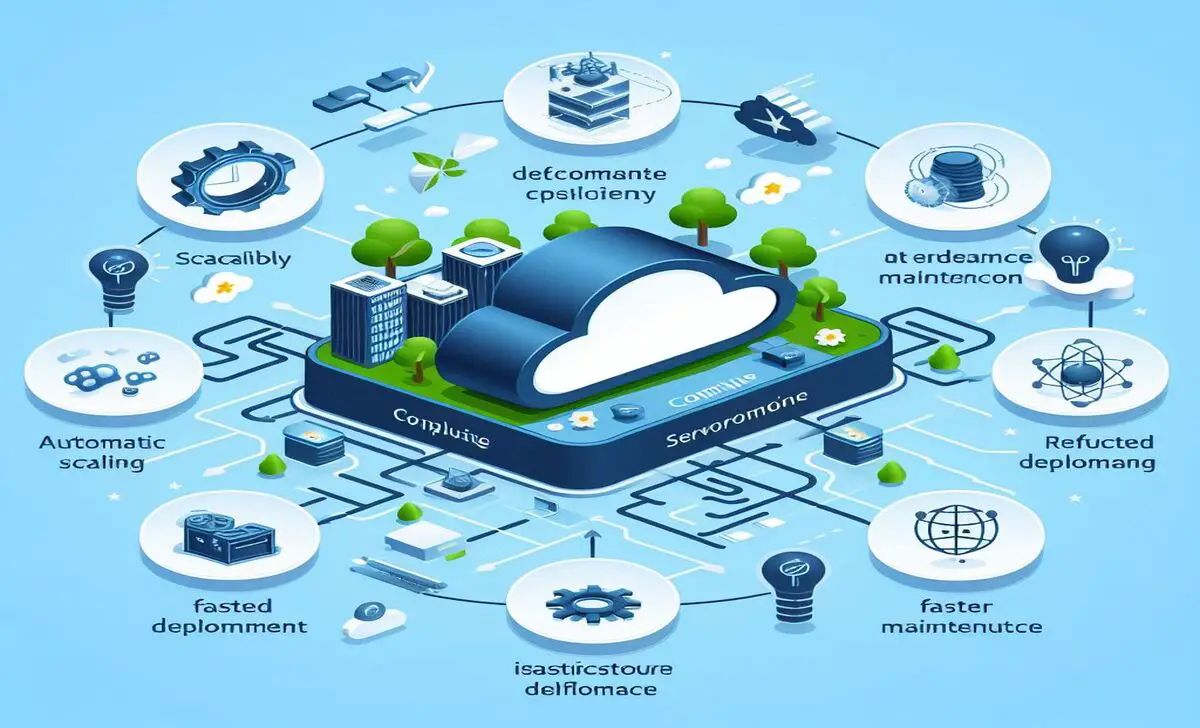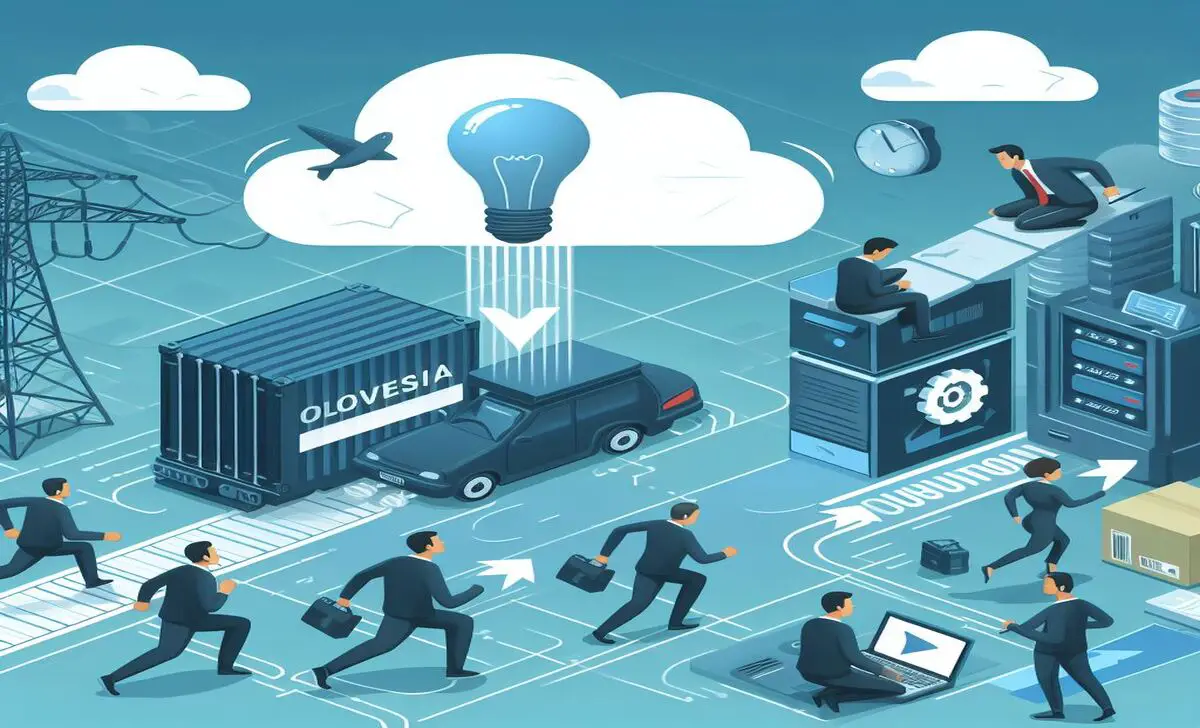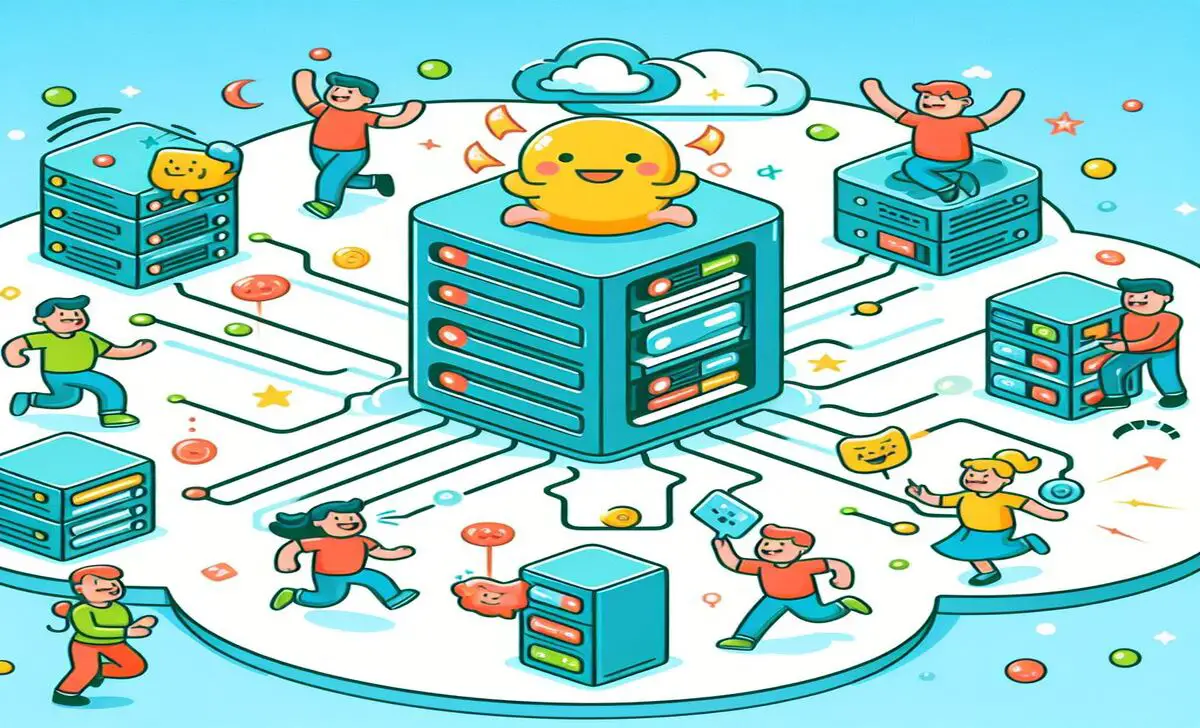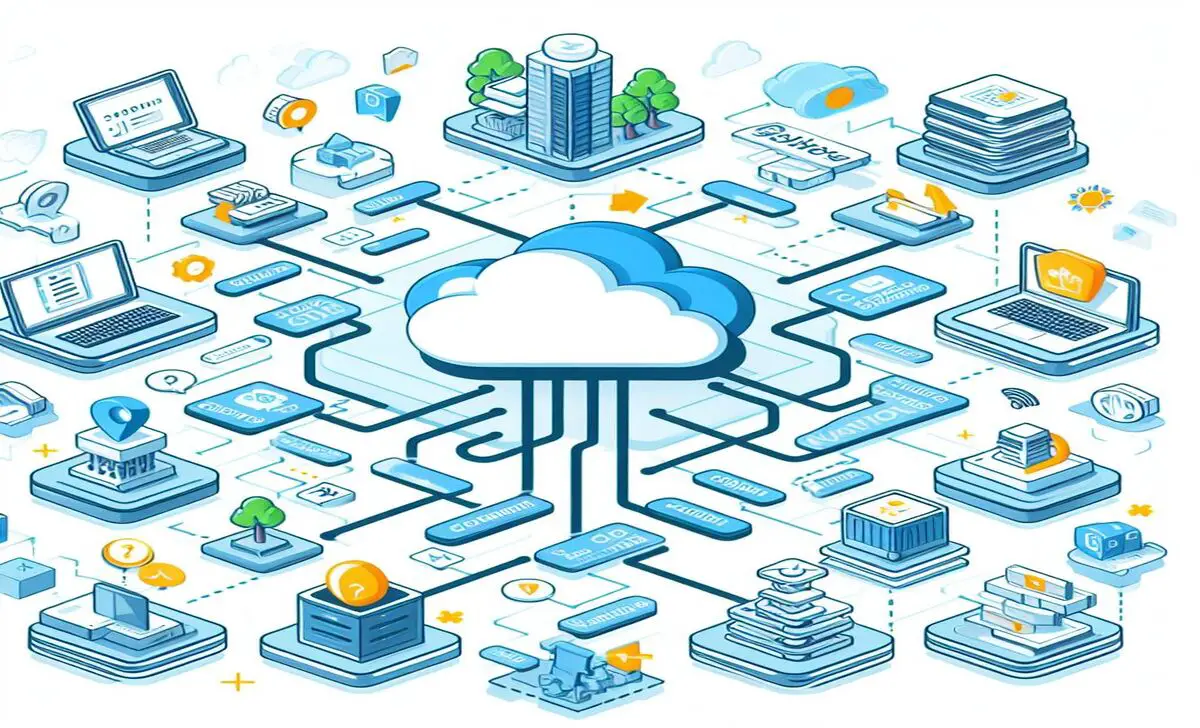As serverless computing becomes increasingly popular, it’s hard to imagine a world without it. Organizations can reap the benefits of automation without worrying about infrastructure management in the serverless era.
But before you can reap its help, you need to understand how IT operations in a serverless world work. Serverless computing is a computing model in which server resources are provisioned as needed and paid for per-use basis. This differs from server virtualization, where server resources are provided to virtual machines on demand.
The service provider handles all computing infrastructure management in serverless computing, including monitoring, scaling, and security. Organizations don’t have to invest in expensive servers or IT infrastructure.
In this blog, we’ll cover what serverless computing is, How IT operations in a serverless world work, and its benefits. We’ll also discuss challenges in implementing serverless technology, migrating an application to this model, and different flavors of serverless architecture like function-based architecture, event-based architecture, and hybrid architecture.

What Is Serverless?
We run applications without a dedicated server using serverless computing. With serverless computing, applications are deployed using an event-driven cloud-based programming model. We often call these applications serverless because they function without depending on a server.
The main advantages of this approach include lower operating costs, greater flexibility, and faster application deployment times. This is especially beneficial for organizations struggling to operate cost-effectively or with limited IT resources. Another benefit is that serverless applications can be easily accessible from any internet-enabled device, including mobile phones and tablets.
Serverless computing also provides organizations with the ability to quickly develop and iterate on application architecture without having to invest in infrastructure upfront. As organizations become more familiar with this approach, the benefits will likely outweigh the drawbacks.
Analysis Of How IT Operations In A Serverless World Work

The advent of serverless computing has revolutionized the conventional data management system. The main idea behind serverless computing is to utilize cloud-based services for data management tasks. These services are virtual computers that provide automation and code-based management.
Welcome to IT operations in a serverless world! So, let’s start with a bit of background. As we all know, cloud computing has revolutionized how businesses and individuals operate. Gone are the days when you had to manage servers and other hardware from scratch.
Now, you can easily outsource specific tasks to providers like Amazon Web Services (AWS) or Microsoft Azure and reap the benefits of their superior infrastructure and technical support. But with this shift in how we manage our technology comes a new challenge: how do we keep our systems up and running without managing individual servers?
Well, there are a few options. First, we can continue to invest in maintaining our internal servers and software and hiring staff to manage them. This is often the case for large organizations with dedicated IT departments overseeinge their infrastructure. However, if your organization is small or lacks dedicated IT staff, it might make more sense to outsource some aspects of your IT operations to third-party providers.
– Alternatively, you could try mixing and matching these two approaches – outsourcing some tasks to third-party providers while maintaining your internal servers for other functions or applications. This allows you to maintain control over certain aspects of your system while still taking advantage of the benefits of cloud computing without having to manage it yourself.
Benefits Of Serverless Computing

With serverless computing, organizations can reduce the cost of IT operations. Serverless computing is flexible and easy to scale up or down as needed. This can help organizations respond quickly to changing demands for IT resources.
With serverless computing, monitoring and management of IT resources are real-time and more accessible. This makes it easier for organizations to enhance data security and resilience. Besides, serverless computing helps reduce workloads on IT personnel because they don’t need to worry about managing servers and other infrastructure. Thus, serverless computing can help businesses save money and time while improving the overall performance of their IT environment.
The main benefits of serverless computing include easy scalability, low cost, reliable service delivery, and automation. Technology has become more popular among enterprises due to its flexibility and ease of use. However, some common problems in a serverless environment include service interruption.
We can monitor application usage and server performance to manage IT operations in a serverless world. It’s essential to keep an eye on how application usage changes over time and adjust accordingly. Besides, IT operations teams must be adept at monitoring server performance metrics like CPU utilization and overall system capacity.
Challenges In Implementing Serverless
In serverless computing, the cloud provider acts as a virtual machine manager and manages infrastructure automation. Serverless computing frameworks like AWS Lambda, Azure Function, and Google Cloud Functions primarily handle these tasks.
Historically, serverless computing has been more of a topic of interest for IT ops teams with experience implementing server-based infrastructure. However, it is also slowly becoming a mainstream practice for dev teams. Here are some guidelines to help you design a serverless architecture:
- Plan for short-term deployment cycles (1-2 weeks).
- Build serverless applications that can be operated on demand (e.g., use event-driven microservices instead of long-running application instances).
- Identify the components that should be managed manually or via automation tools (e.g., monitoring, scaling, logging, backups).
- Consider automation technologies such as machine learning and artificial intelligence to solve everyday problems.
- Develop application logic in serverless environments using microservices and functionless apps. Each functionless app should have its deployment environment, scaling policies, and monitoring configuration.
How To Migrate An Existing Application To A Serverless Model

The serverless model offers many advantages over traditional server-based architecture, such as reduced costs and faster deployment. In particular, serverless functions are easy to scale and manage. Parts are generally stateless, which means they don’t require any specific configuration or environment.
To begin a serverless journey, first identify the features of the application that can be replaced with serverless functions. After this, create a migration plan to move the application’s functionality to a serverless platform. Finally, deploy the new serverless functions to the desired platforms and monitor and maintain their performance.
What Are The Different Flavors Of Serverless?
– Functions as a server: This serverless architecture relies on pre-configured functions or services executed without an underlying server. In this architecture, developers use serverless technologies to build applications and backend infrastructure without worrying about the underlying infrastructure. These applications can scale automatically without making any changes to the software architecture.
– Functions as a platform: With this flavor of serverless architecture, developers use serverless technologies to build backend infrastructure and applications without worrying about the underlying infrastructure. We can scale these applications in response to demand and update them more easily.
– Functions as a service: This serverless architecture relies on third-party services or functions hosted by a provider and accessed via a cloud-based API. With this architecture, developers can focus on the application and backend infrastructure without worrying about how it is implemented or managed.
– Functions on demand: This serverless architecture allows developers to deploy code without worrying about the underlying infrastructure. Developers don’t need to provision servers or ensure they have enough capacity for their application, making it a cost-effective solution for many businesses.
Hybrid architectures allow organizations to choose from one of the above flavors depending on their specific use cases and requirements. This offers excellent flexibility when developing backend infrastructure and applications for modern computing environments.
How To Manage A Serverless System?

– Architecture: Select the right serverless platform for your system. This will determine the system’s architecture, whether it is server-based or cloud-based. It will also choose the system’s features, such as the deployment model and runtime environment.
– Operations: Plan and execute the necessary operations to keep your serverless system running smoothly. These operations could include monitoring, automation, and management. A common practice is to use automation tools to schedule tasks based on defined schedules and triggers.
– Monitoring: Keep an eye on performance and utilization metrics to identify issues early on and take appropriate action. This could include monitoring third-party services such as serverless monitoring tools or open-source monitoring frameworks.
– Management: Automate and streamline your serverless management processes with serverless automation platforms, serverless deployment tools, and serverless monitoring tools. This will help you manage your system more efficiently and effectively.
How To Architect A Serverless System?
- Design for rapid deployment: Choose a serverless platform that can be quickly deployed in your organization.
- Use functions as a service (FaaS): Functions can be run in the cloud and accessed by your applications.
- Use containers to isolate app functions: Containers provide an isolated environment for apps running on a serverless platform.
- Use Azure Functions: Azure Functions allow you to run code on the fly in response to events or triggers.
- Use Kubernetes: Kubernetes is a powerful tool for managing serverless systems. It provides infrastructure automation and monitoring, manageability, scalability, and deployment automation.
- Consider security measures: When designing serverless systems, it’s essential to consider security measures such as authentication and authorization. This will help ensure secure access to the system and protect data within the system.
- Plan for scaling: Ensure that your serverless architecture is scalable enough to handle increased demand. Also, consider how you will scale when you design your system.
- Plan monitoring: Provide monitoring of serverless systems to ensure that they are operating as expected and responding to user requests as desired. This will help mitigate issues before they become critical failures.
How To Choose The Right Type Of Serverless For Your Business?

– Serverless computing is a new way of managing cloud-based services that eliminate the need for traditional on-premises servers. This technology has become increasingly popular over the past few years. It is now used in various scenarios, such as real-time processing, machine learning, and artificial intelligence.
– There are two main types of serverless computing: function-as-a-service (FaaS) and platform-as-a-service (PaaS). FaaS enables you to run code without having to manage or provision servers.
This provides several benefits over traditional IT operations, including faster deployment and reduced costs. However, it’s essential to understand the different serverless options available and choose the one that best suits your business needs.
Conclusion
Serverless computing is revolutionizing the way organizations manage their cloud-based applications. It enables an application to be self-running and scalable without requiring a server or system administrator. The user experience is more consistent, and service management becomes more accessible.
In this blog, we discussed the benefits of serverless computing, how serverless works, and some best practices to follow when migrating existing apps to serverless computing.
Instead, they can use cloud-based computing services such as Amazon Web Services (AWS) or Microsoft Azure to quickly and cost-effectively launch applications and services. By understanding how IT operations work in a serverless world, you can better understand the benefits of this new technology and how it can benefit your business.
Frequently Asked Questions
1.How Is Serverless Computing Used In It?
Ans: Serverless computing is a computing model in which applications are run without a dedicated server. This eliminates the need to invest in and maintain expensive server infrastructure, as serverless computing platforms take care of all the necessary resources (computing, storage, networking) required to run the application.
2.What Is Serverless, And How It Works?
Ans: Serverless technology refers to using software that does not have a centralized server. This means the serverless system runs on an infrastructure managed using a cloud-based platform.
The benefits of serverless technology include cost savings, scalability, and increased agility. In short, serverless systems allow for more flexibility and scalability when dealing with IT operations, thereby reducing costs and streamlining processes.
3.How Does A Serverless Infrastructure Work?
Ans: Serverless architecture is a cloud-based system that allows for the deployment of applications without having to manage and maintain servers. This architecture has many benefits, including lower costs and faster deployments. Additionally, serverless architecture removes the need for monitoring and managing servers, which can dramatically impact efficiency, scalability, and security.
4.What Are The Four Core Components Of Serverless Development?
Ans: Regarding serverless development, four core components are critical – functions, services, resources, and configurations.
5.What Do You See As Its Strengths And Weaknesses?
Ans: Some of the strengths of serverless technology include its rapid deployment, scalability, and elasticity. These attributes make the serverless technology ideal for automation and scaling applications where high-volume, low-maintenance workloads are needed.
